Now that you have settled in and gotten a first impression of the FU-BEST Program as well as Berlin as a city, hopefully gotten to know your class mates a bit and survived your busy first week, it is time to venture out and get to know Berlin in all of its glory and diversity.
In order for you to easily find things to do and learn about the must visits in Berlin, we have compiled a list of important and interesting places in Berlin which you can visit this weekend (or later down the line).
Now, Berlin is huge and there are thousands upon thousands of other places and events to explore. I’m sure we could fill an entire term with impressive architecture, arts, museums, etc., but since you will have to start somewhere, these are our recommendations:
The Brandenburg Gate
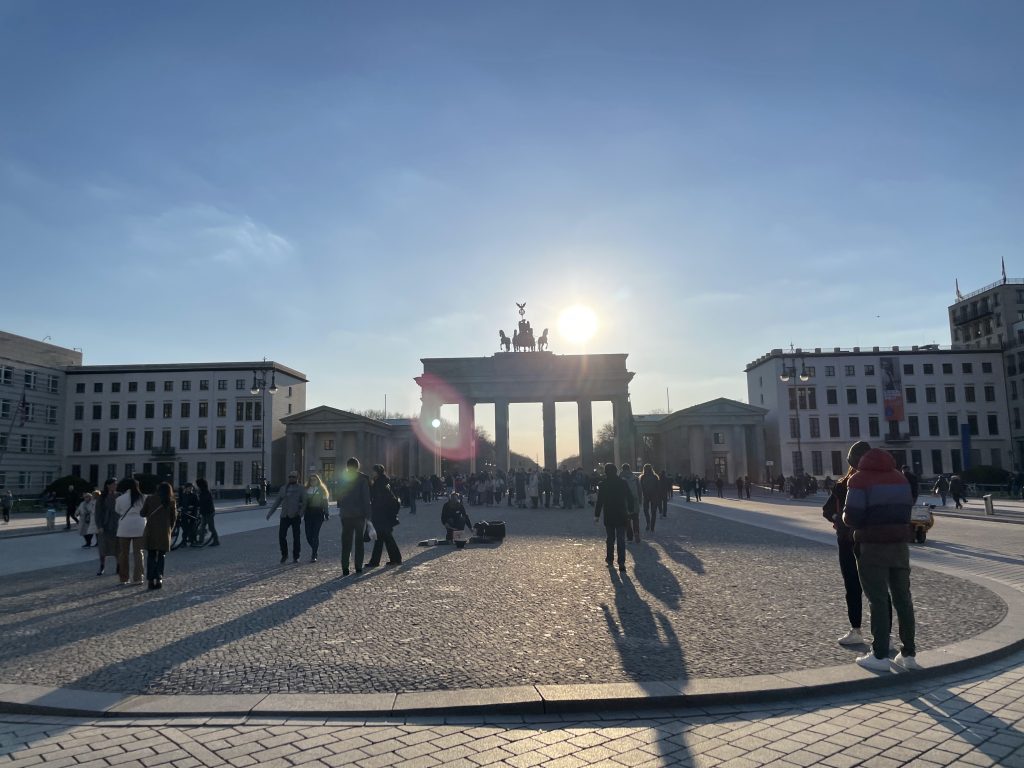
The epic Brandenburg Gate is the first sight people think of when hearing about Berlin. Serving as the main gate for the ‚Straße des 17. Juni‘ which is a broad avenue leading directly to the Siegessäule (The Victory Column), an important national monument celebrating the ‚Einigungskriege‘ (Unity Wars) which took place from 1864 – 1871.
We recommend visiting the Victory Column as well since you can tour the inside and take a nice walk through the ‚Großer Tiergarten‘ (the big animal garden), after which you can have a nice beverage in the ‚Café am Neuen See‘.
The Brandenburg Gate itself is located right next to several embassies such as the American, English, French and not too far away – the Russian embassy. At the center of the Pariser Platz (displayed on the picture), various (political) demonstrations take place almost around the clock.
My personal favorite is visiting the gate towards dusk since the composition of clouds behind the gate is different every day and looks simply incredible.
We can also highly recommend getting bikes and touring the city that way.
The Memorial to the Murdered Jews of Europe
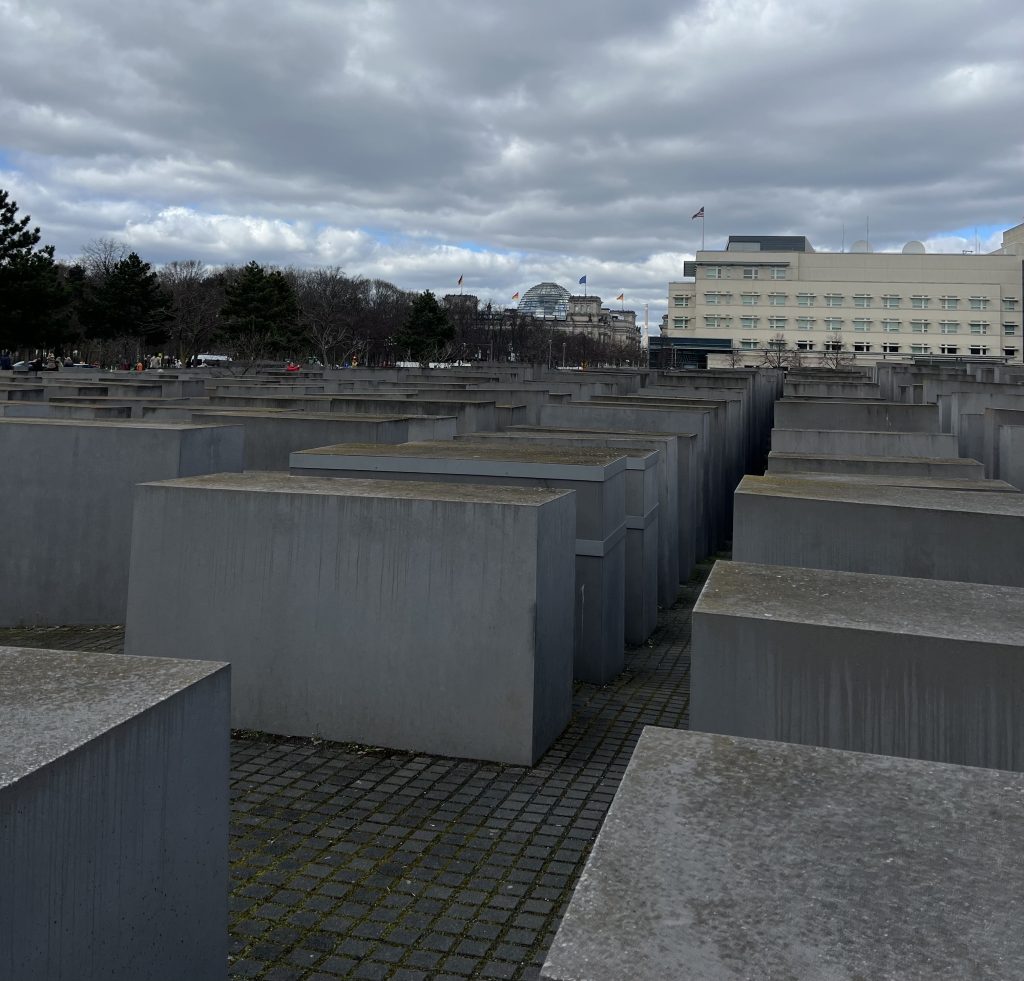
Berlin is a fun and exciting city.
But underneath that fun and diversity are various dark chapters, oppression and a genocide. It is important to be mindful – not only of the various memorials you can find all over the city, but in particular with this one.
Germans, and as a matter of fact, us as citizens of the world should never forget the atrocities that took place in Germany during the Nazi regime and as globalized citizens, we all carry the responsibility to understand that something like the Holocaust should never happen again.
As you might find out in some FU-BEST courses, genocides are comparable, however, this type of industrialized eradication of human beings has never happened on the same scale and the Memorial to the Murdered Jews in Europe will give you that impression while walking through it.
The design is specifically meant to make you feel small and irrelevant. It is supposed to scare you and send shivers down your spine to bring across the emotional helplessness of the time.
I sincerely recommend both visiting the memorial and also taking a few minutes to really take in this feeling and pay respects to the victims of the Nazis‘ hatred.
Please make sure to be respectful and not climb any of the stones.
Alexanderplatz, the Fernsehturm and the World Clock
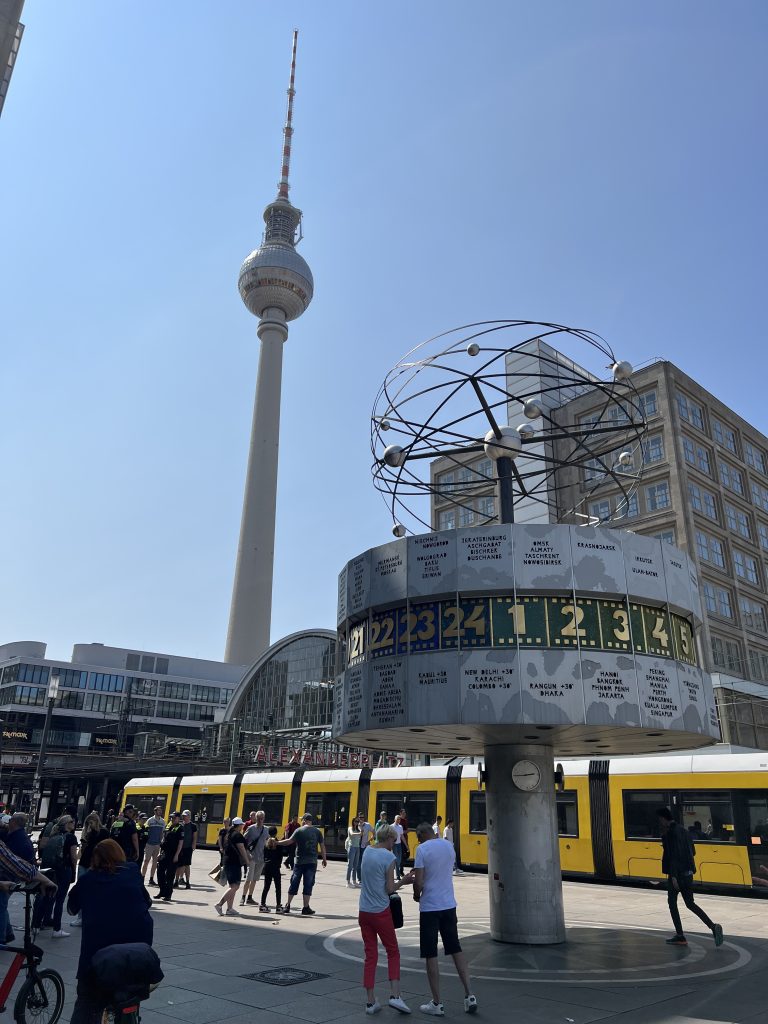
One of the signature buildings installed in formerly Soviet-occupied cities were the enormous television towers used to broadcast domestic state media.
This is how the Berlin Alexanderturm came to be.
Located in the center of East Berlin on the Alexanderplatz, it has been an important monument ever since the Cold War and naturally lots of infrastructure developed around it. There are several malls, restaurants, bars and public transport as well as the ‚Rotes Rathaus‘ right around the corner.
In addition, it is always fun to visit the World Clock to find your own country or city and get a spacial and visual understanding for time.
Furthermore, there are various events and flea markets every other weekend, so it is always fun to be surprised by ther buzzing city life.
Museum Island and the Berlin Dom
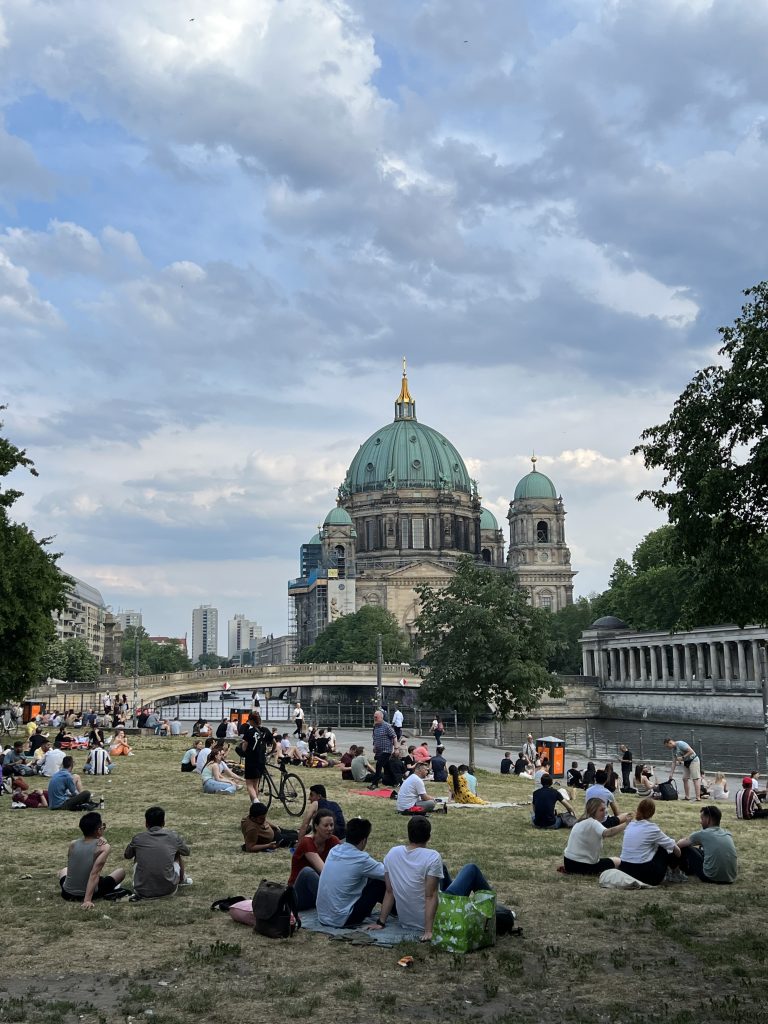
By now, you are likely tired of hearing how broad Berlin’s cultural landscape is. Nonetheless, Museum Island around the Berlin Dom is an essential place to get an idea about how Berlin became the city it is today.
Since you all received a free pass to all state museums in Berlin, we can but recommend planning a whole day or even several days exploring these exceptional museums, the grand architecture (highly influenced by Karl Friedrich Schinkel) which has gone through several eras from epic to renaissance-type buildings and, of course, the Berlin Dom itself.
Located next to the famous ‚Lustgarden‘ (garden of lust), the Dom is the biggest evangelical church in Germany and can be toured both inside and on top of the roof. Although Berlin is by far the least religious city in Germany, it goes to show how big of an influence the German church has had.
Either way, the whole area along the Spree is simply beautiful and it is absolulety worth it planning to visit the Berlin Dom.
East Side Gallery
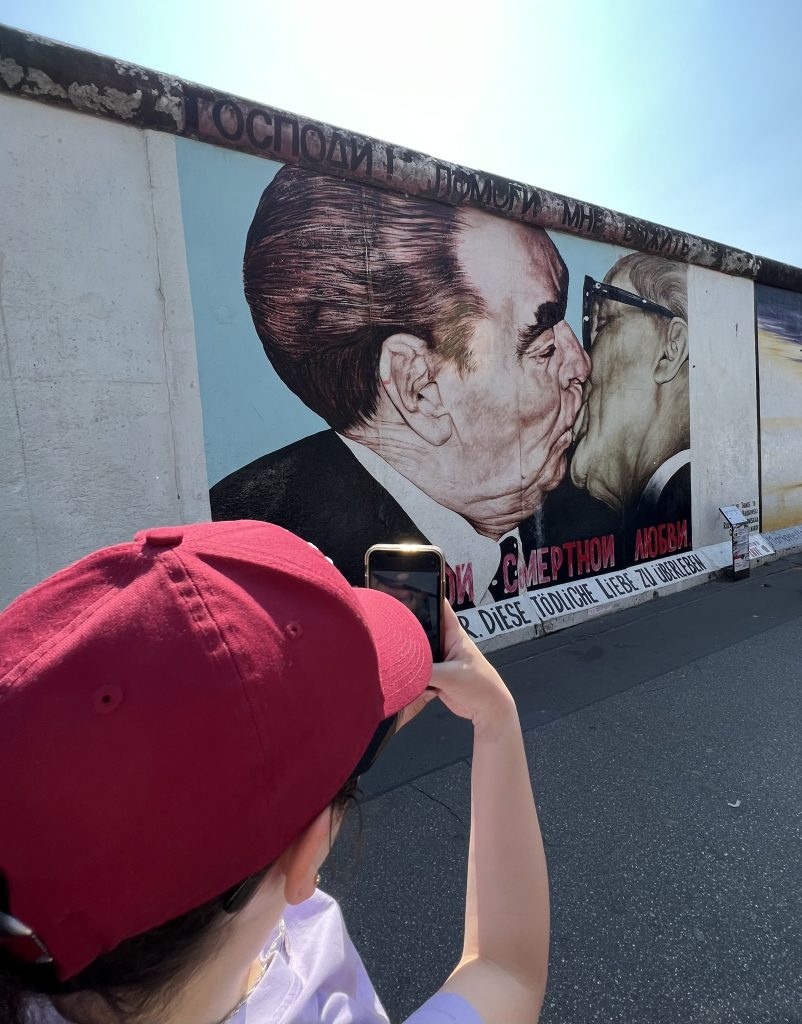
One of the most significant modern historical remnants of the Cold War is – without a doubt – the Berlin wall.
As you probably already know or will find out in many of our classes, West Germany was the Allies‘ „bulwark“ against the Soviet Union after World War II. No matter how you think about world politics, the wall which is now adorned with several graffitis and art works, displays the main theme of our university: freedom.
Freedom of thought, freedom of mobility and freedom of information are some of the most important values in most western constitutions and democracies and the innate desire of people was on full display when the wall came down on November 9th, 1989.
As former German President Horst Köhler said: „The wall was an edifice of fear. On November 9th, it became a place of joy“.
More than 33 years later, this still holds true and as a living piece of history, the East Side Gallery serves as a reminder that walls will always create tension, hatred and limit personal freedoms.
A must visit during your term in Berlin.
The Reichstag Building
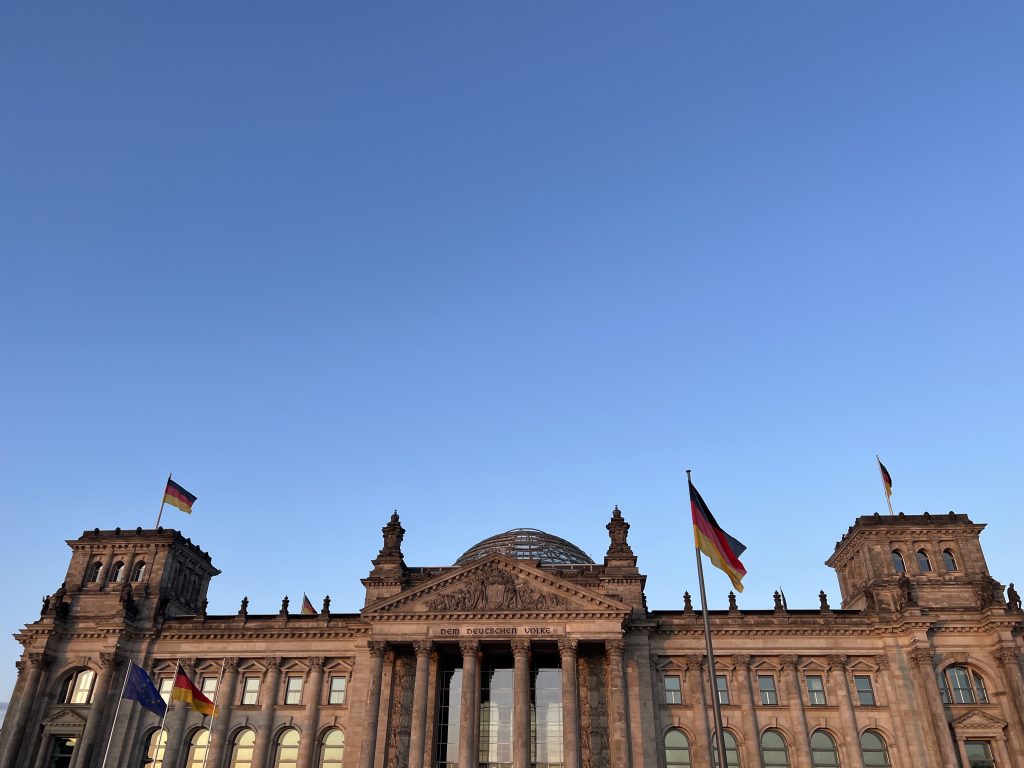
While most of you have already seen and toured the Reichstag Building, we figured it still deserves a spot on this list. Not only has this building been the focal point to many historical events (both good and bad) throughout the several regimes Berlin has been through, but you can also visit the plenary halls and even listen in on some policy-making in the process by registering for a tour here.
Additionally, if your friends or family come to visit, this is an excellent place to show off the political heart of Germany and the many facets Berlin has to offer.
Checkpoint Charlie

Known as one of the most significant crossings and points of the Cold War era, Checkpoint Charlie was a crucial location. The sign, written in four languages – English, Russian, German, and French – served as a warning to those heading to the other side of the wall: „You are now leaving the American sector.“
Checkpoint Charlie was, therefore, a true border between the two very different parts of Berlin and marked the crossing point between two realities: the capitalist West and the communist East.
Today, the monument that remains consists of the signage and the American guard post, both of which have been reconstructed. The original structure can be seen at the Allierten Museum in Dahlem. There is also the Checkpoint Charlie Museum (Mauermuseum Checkpoint Charlie), which, through its exhibitions, tells the stories of the various ways East Berlin residents tried to reach freedom over the years. The museum is open daily, and ticket must be purchased online.
Berliner Dom

It is impossible to miss, towering over much of the city: the distinctive Berliner Dome. Originally, in the 15th century, it belonged to the Prussian royal family, the Hohenzollerns, and was therefore part of the castle.
Over the centuries, particularly thanks to the influence and will of Frederick William II, the Berlin Cathedral was envisioned as a church similar to St. Paul’s Cathedral in London or St. Peter’s Basilica in Rome, and as the main center of Protestant worship.
Visitors can explore various areas of this magnificent cathedral, and tickets can be purchased online.
Potsdamer Platz

Potsdamer Platz is a crucial site in the history of post-war Germany and the reunification of the German state. In the early 20th century, it was a key commercial hub, bustling with shops, bars, and theaters.
However, during World War II, the nearby Reich Chancellery made it a target for severe bombing, resulting in the complete destruction of most buildings. Later, the square found itself in a unique position: right on the border between the American and Soviet sectors of the city, transforming into a barren no-man’s land, eventually divided by the construction of the Berlin Wall.
A nice curiosity: after the Wall’s fall, Potsdamer Platz was entirely rebuilt, with the first major event being Roger Waters‘ concert in July 1990!!
Tiergarten and Siegessäule
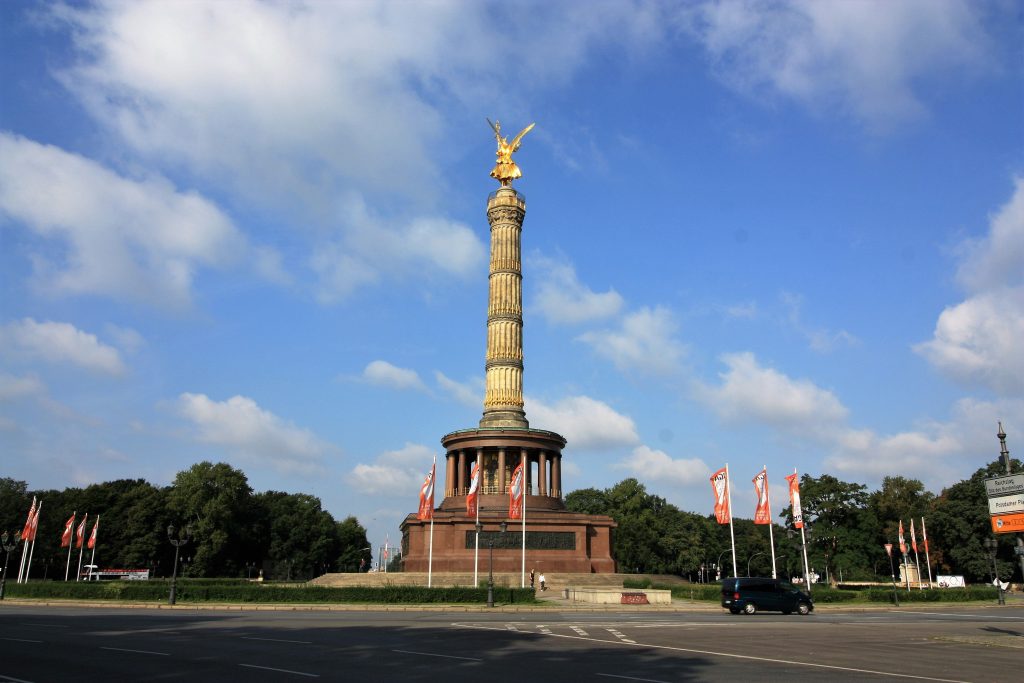
If you’re looking for some green spaces in Berlin, you’re spoiled for choice! Berlin is full of parks, forests, and natural spots waiting to be explored.
Right in the heart of the city lies the Tiergarten, a vast park perfect for going around, reading a book, chatting with friends, or enjoying a drink. In the center of the Tiergarten stands the Siegessäule (the Victor Columny), which dates back to 1864 and was built to honor Prussia’s victory in the war against Denmark.
Later, two more wars saw Prussia victorious: against Austria and France. These wars, later called the „wars of unification“, are commemorated in the structure of the column, which features three segments.
The statue atop the column is about 8 meters high and depicts Victory with a laurel wreath and a headdress adorned with an eagle, symbolizing Prussia.
Nice tip: if you visit Tiergarten and you enjoy walking, there’s a panoramic platform at the top of the Victory Column, accessible via a 285 step staircase, where you can enjoy a stunning view of Berlin from above!
Schloss Charlottenburg

Charlottenburg Palace is a sumptuous and beautiful residence located in the Charlottenburg district of Berlin.
Once owned by the Prussian royal family, the Hohenzollerns, it served as the summer residence for Queen Sophie Charlotte, who was reportedly a great lover of music (we can only imagine how many renowned artists graced its halls!).
The palace interior is open to visitors and is surrounded by a magnificent park perfect for taking a nice walk (keep an eye out for the charming squirrels along the way!).
Inside, the palace is divided into two sections: the Old Palace, featuring the apartments of the queen and king, and the Neuer Flügel (New wing), which includes additional living quarters and the wondeful Goldene Galerie (Golden gallery). These rooms showcase lavish tableware made of gold, porcelain, silver, and glass, as well as the royal crown jewels.
All information regarding ticket purchases and tour bookings can be found on the palace’s official website.
For more information, feel free to email us, come to the office or refer to previous Blog entries such as this.
I sincerely hope you found some interesting sights and are able to enjoy your first couple of weeks in Berlin!
And remember: no matter what you do, what counts in the end is who you did it with! So don’t be shy and ask your fellow FU-BESTers to join you on your Berlin adventures and create some unforgettable memories together!

